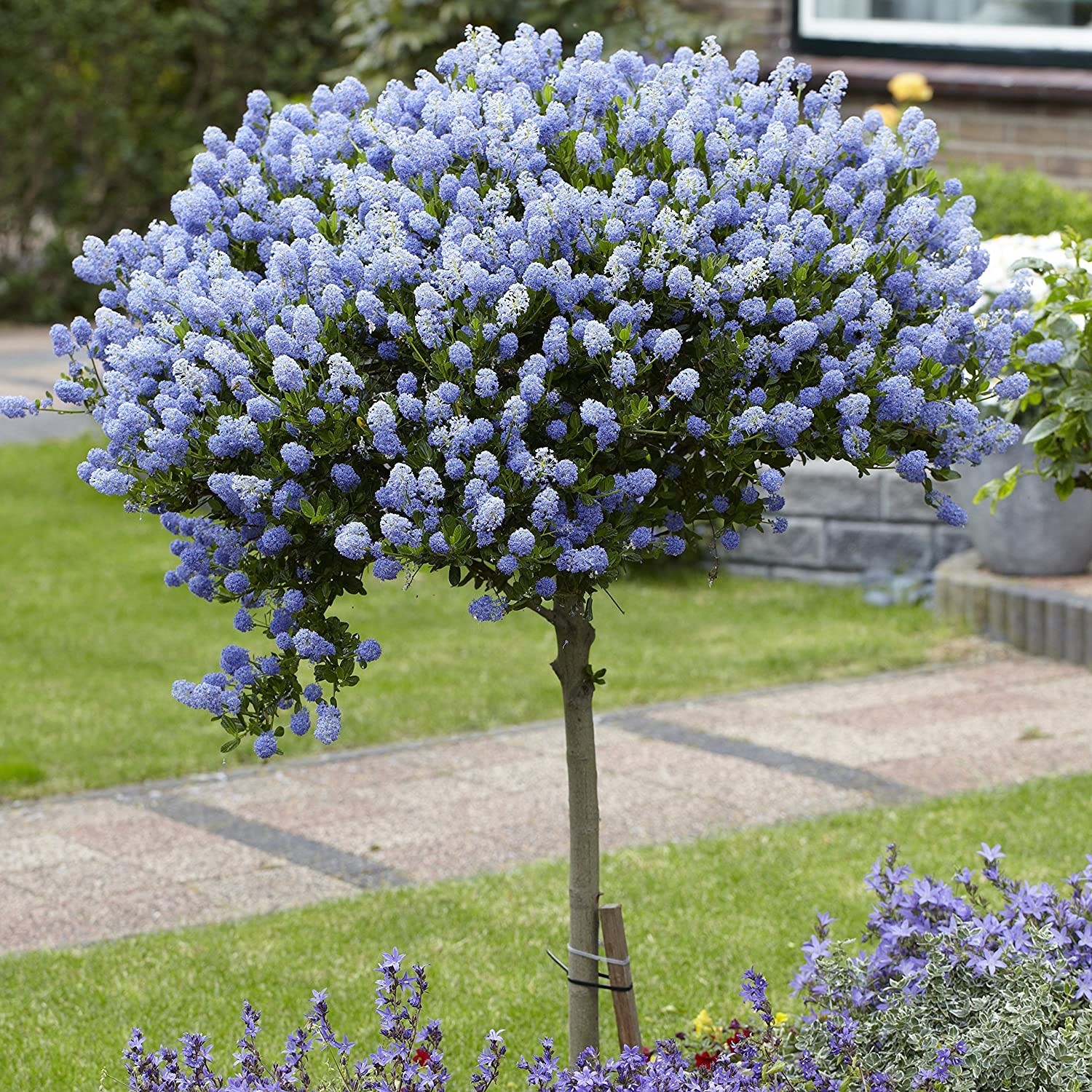How To Keep Your Lilacs Blooming For Years To Come
Lilacs are one of the most popular flowering shrubs in North America. They are known for their beautiful, fragrant blooms that come in a variety of colors, including white, purple, pink, and blue. If you have a lilac bush in your yard, you want to make sure that it blooms as abundantly as possible.
Here are some tips on how to keep your lilacs blooming for years to come:
- Choose the right location. Lilacs need full sun to flower well. If you plant them in a shady spot, they may not bloom at all.
- Plant them in well-drained soil. Lilacs do not tolerate wet feet. Make sure the soil in your yard is well-drained before you plant your lilac bush.
- Fertilize your lilacs. Lilacs need a moderate amount of fertilizer to bloom well. You can fertilize your lilacs in the spring and fall.
- Water your lilacs regularly. Lilacs need about an inch of water per week. If you live in a dry climate, you may need to water your lilacs more often.
- Prune your lilacs regularly. Lilacs should be pruned in the spring, after they have finished blooming. Pruning will help to keep your lilac bush healthy and encourage new growth.
- Deadhead your lilacs. Deadheading is the process of removing spent blooms. This will help to prevent your lilac bush from setting seed and will encourage it to produce more flowers.
[MAIN CONTENT]
In addition to these general tips, there are a few other things you can do to help your lilacs bloom more abundantly:
- Mulch around your lilac bush. Mulch will help to keep the soil around your lilac bush moist and cool. It will also help to suppress weeds, which can compete with your lilac bush for nutrients.
- Protect your lilacs from pests and diseases. Lilacs can be susceptible to a number of pests and diseases, including aphids, borers, and powdery mildew. If you notice any problems with your lilac bush, be sure to treat them promptly.
- Be patient. It may take a few years for your lilac bush to reach its full potential. Don't get discouraged if it doesn't bloom as well as you would like in the first few years. With proper care, your lilac bush will eventually be covered in beautiful, fragrant blooms.
[CONCLUSION]
Following these tips will help you to keep your lilacs blooming for years to come. With a little care and attention, you can enjoy the beauty and fragrance of these wonderful shrubs for many years to come.
Lilac bushes are a beautiful addition to any garden, but they need to be trimmed regularly in order to stay healthy and produce their best blooms. If you're not sure how to trim a lilac bush, you can find a wealth of helpful information on Garden Wiki. This website provides step-by-step instructions on how to trim lilacs, as well as tips on when and how often to prune them.
In addition to providing detailed instructions, Garden Wiki also includes a wealth of other information about lilacs, such as their history, different varieties, and care requirements. Whether you're a seasoned gardener or a complete beginner, you're sure to find something useful on this website.
So if you're looking for more information about trimming lilac bushes, be sure to visit Garden Wiki. You won't be disappointed!
FAQ of trimming lilac bushes
Q1. When is the best time to prune lilac bushes?
A. The best time to prune lilac bushes is right after they have finished blooming in late spring or early summer. This is because lilacs flower on old wood, so pruning them later in the season will reduce the number of flowers they produce the following year.
Q2. How much should I prune my lilac bushes?
A. The amount you prune your lilac bushes will depend on their size and shape. For a mature lilac bush, you should only prune off about 1/3 of the old wood each year. This will help to keep the bush healthy and encourage new growth.
Q3. What should I look for when pruning my lilac bushes?
A. When pruning your lilac bushes, you should look for dead, diseased, or damaged branches. You should also remove any branches that are crossing or rubbing against each other. This will help to improve the airflow through the bush and prevent the spread of disease.
Q4. What tools do I need to prune my lilac bushes?
A. You will need a sharp pair of pruning shears and a lopper to prune your lilac bushes. You may also want to wear gloves to protect your hands from the thorns.
Q5. How do I prune an overgrown lilac bush?
A. If you have an overgrown lilac bush, you can use the "third" rule to prune it back. This means that you should prune off a third of the oldest branches all the way to the ground each year for three consecutive years. This will help to rejuvenate the bush and encourage new growth.
Image of trimming lilac bushes
- Image 1: A person trimming a lilac bush with a pair of loppers. The bush is in full bloom, and the flowers are a beautiful shade of purple.
- Image 2: A close-up of a lilac bush that has been trimmed. The branches are all cut back to a few inches long, and the bush is now a more manageable size.
- Image 3: A lilac bush that has been pruned to encourage new growth. The old branches have been cut back, and the new growth is now coming in strong.
- Image 4: A lilac bush that has been espaliered against a wall. The branches have been trained to grow flat against the wall, and the bush now looks like a beautiful living wall.

- Image 5: A lilac bush that has been shaped into a topiary. The bush has been trimmed into a specific shape, such as a ball or a cone.

Post a Comment for "How To Keep Your Lilacs Blooming For Years To Come"